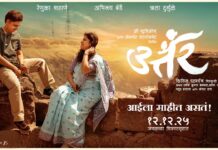By Surendra Bhatia
Bollywood looks different now. Its films are even populated by characters that seem new and from some unexplored lands. The setting has a bit of a déjà vu feel to it, like the village house that one had once lived in and hadn’t visited since decades. It feels fresh now because it had been ignored for many decades. This newness comes from film stories being placed in B-towns of India, like Kanpur and Lucknow, like Chandigarh and Bhopal. It’s not that these cities didn’t find mention in films earlier, but then it was only in the dialogues. Someone asks the hero: ‘Where are you from?’ and he replies ‘Bhopal’ or ‘Chandigarh’ or some other B-town but the place was rarely shown on screen. Today, not just the hero but the entire cast is resident of a B-town, and the film’s story revolves around it too.
This is, perhaps, not a coincidence. It’s the way Bollywood has evolved over the decades. Earlier, film stories were based either in villages or big cities like Bombay, Delhi or Calcutta; then, villages got knocked out of films’ shooting schedules and ‘phoren’ locations got inked in. For a long time, urban Indian and foreign locations featured in films, but now, the trend has steadily changed to B-towns of India, telling stories that Bollywood had not looked at earlier.
Filmmaking activities have always been centred in India’s big cities, and everyone with cinematic dreams headed towards them. Now, with democratisation of filmmaking, with YouTube offering a platform to anybody shooting a skit, song or film with a smart phone, the filmmaking base has broadened greatly. Earlier, when filmmakers came from small towns, they focussed on big-city stories to seek Bollywood’s acceptance, but now, directors have started telling stories, they want to rather than the ones traditional Bollywood would like them to. Mardaani 2 does not aspire for the big city ambience; it is localised in Kota and quite happy in its authentic cradle. Today, almost every third, if not second, Bollywood film stays put in a small town or city because the stories being told now are more localised than ever before. The time Bollywood lead actors carried names like Rahul and Pooja, with ancestry ambiguous enough to be accepted by all sections, is over. Now, it is all about the story, and far less about the setting.
Also, perhaps, audiences get impressed more with authenticity than with glamour. When a Bareilly Ki Barfi gets made, the small-city ambience becomes an additional attraction, almost like foreign locations were when they first got screen time in Bollywood films. Maybe, it is the sign of times that audiences look for sincerity in filmmaking and not forced or contrived entertainment. It doesn’t matter to them whether the setting is Bareilly or Berlin as long as the content is interesting.
Of course, all this is evolution of Bollywood cinema, and it is quite possible that the next generation of films will be based in cyberspace. But, for the moment, the B-town locations and stories have rejuvenated interest in Hindi cinema and if some filmmakers can rope in rural stories too, the rainbow of Bollywood films would be complete.
































